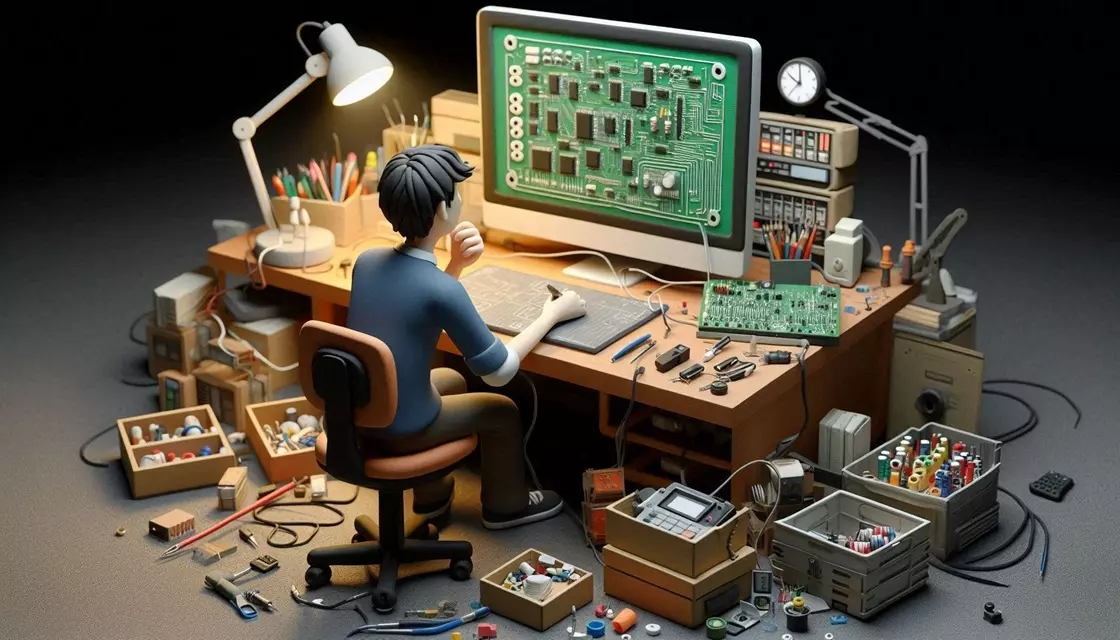Discover essential printed circuit board (PCB) design rules to enhance your electronics projects. Learn about layout guidelines, trace width considerations, signal integrity, thermal management, and design for manufacturability (DFM). Ensure your PCB designs are reliable, efficient, and ready for production with these expert tips.
Printed Circuit Boards (PCBs) are the backbone of modern electronic devices, serving as the physical platform for electronic components and their connections. Designing a PCB requires a blend of theoretical knowledge, practical skills, and adherence to best practices to ensure functionality, reliability, and manufacturability.
PCB Design:
PCB Design deals with translating the schematic into a physical board that can be manufactured and assembled.
- Definition: PCB (Printed Circuit Board) design is the process of creating a physical board that mechanically supports and electrically connects electronic components using conductive tracks, pads, and other features.
- Focus: It focuses on the practical and physical aspects of laying out the circuit on a board. This includes the placement of components, routing of electrical connections, and ensuring manufacturability.
- Tools: Typically uses PCB design software like Altium Designer, Eagle, or KiCad to create the layout.
- Output: The primary output is a set of Gerber files and other manufacturing files that are used to fabricate the PCB.
1. Understand the Requirements:
Before starting the design, it’s crucial to thoroughly understand the project requirements. This includes:
- Functional Requirements: What the circuit is supposed to do.
- Electrical Requirements: Voltage, current, power ratings, signal integrity, and noise considerations.
- Mechanical Requirements: Size, shape, and constraints related to the enclosure.
- Environmental Requirements: Operating temperature, humidity, and other environmental factors.
2. Schematic Design:
The schematic is a blueprint of your PCB design. It should include all electronic components and their interconnections. Key points to consider:
- Component Selection: Choose components that meet the design requirements and are readily available.
- Correct Symbols and Footprints: Ensure the schematic symbols and footprints match the actual components.
- Clear Labeling: Label all components and connections clearly to avoid confusion.
- Electrical Rules Check (ERC): Perform ERC to ensure there are no missing connections or errors.
3. Component Placement:
Component placement is critical for both performance and manufacturability. Consider the following:
- Signal Flow: Arrange components logically according to the signal flow.
- Minimize Signal Path Lengths: Shorter paths reduce noise and signal degradation.
- Thermal Management: Place heat-generating components away from sensitive components.
- Accessibility: Ensure that test points and components that might need adjustment or replacement are accessible.
4. Routing:
Routing involves connecting the components with copper traces. Here are some guidelines:
- Trace Width: Determine appropriate trace widths based on current-carrying requirements.
- Impedance Control: For high-speed signals, maintain controlled impedance by designing appropriate trace widths and spacing.
- Avoid Acute Angles: Use 45-degree angles for turns instead of 90-degree angles to reduce signal reflection and electromagnetic interference (EMI).
- Layer Management: Use multiple layers effectively. Signal layers, ground, and power planes should be well-defined.
- Ground Plane: Use a solid ground plane to reduce noise and provide a stable reference voltage.
5. Power Distribution:
Proper power distribution is essential for stable circuit operation:
- Power Planes: Use power planes for main voltage levels to reduce voltage drops and noise.
- Decoupling Capacitors: Place decoupling capacitors close to IC power pins to filter out noise.
- Power Integrity: Ensure the power distribution network (PDN) has low impedance.
6. Design for Manufacturability (DFM):
DFM principles ensure that your PCB can be manufactured reliably and cost-effectively:
- Component Spacing: Adhere to the manufacturer’s spacing guidelines to avoid issues during assembly.
- Panelization: Design your board with panelization in mind to optimize manufacturing processes.
- Test Points: Include test points for easy testing and debugging during production.
- Clearances: Ensure there are appropriate clearances between traces, pads, and components to prevent shorts and manufacturing defects.
7. Design Verification:
Before sending your design for manufacturing, perform thorough verification:
- Design Rule Check (DRC): Run DRC to ensure the design adheres to all manufacturing rules.
- Electrical Testing: Simulate the circuit to check for correct functionality and performance.
- Prototype Testing: Build and test a prototype to identify and rectify any issues.
8. Documentation:
Proper documentation is essential for manufacturing and future maintenance:
- Bill of Materials (BOM): Create a detailed BOM listing all components with part numbers and quantities.
- Assembly Drawings: Provide clear assembly drawings showing component placements and orientations.
- Gerber Files: Generate Gerber files for PCB fabrication, including drill files and solder mask layers.
- Testing Procedures: Document testing procedures and expected results for quality assurance.
Conclusion:
Designing a PCB is a meticulous process that requires attention to detail, adherence to best practices, and thorough verification. By following printed circuit board design rules, you can create PCBs that are not only functional and reliable but also manufacturable and maintainable. Always stay updated with the latest design tools and industry standards to continually improve your PCB design skills.

